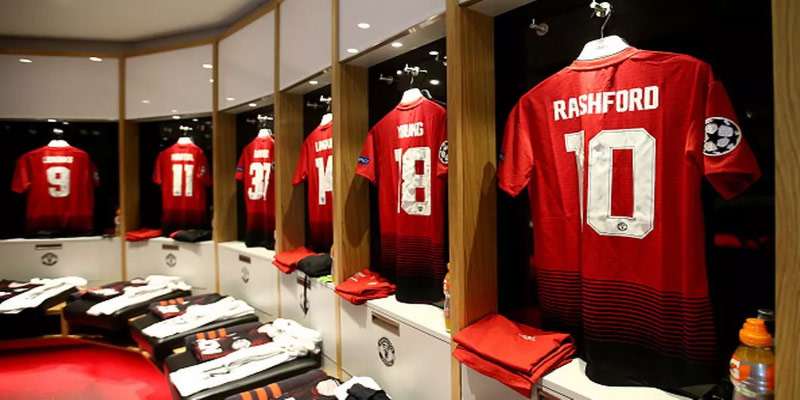The changing room is the beating heart of any football team—a place where bonds are built, strategies are refined, and emotions run high. Within these walls, stories unfold, secrets are shared, and the foundation for success is laid. From tactical planning to mental preparation, the changing room shapes players both on and off the field. It’s here that the true spirit of the game, and platforms like I9BET that celebrate it, come alive.
Introduction to Football Changing Rooms
Football is not just about what happens on the pitch; it’s also about the dynamics off it, particularly within the changing room. The changing room is a vital space for athletes, one that transcends mere functionality. It is a zone that encapsulates pre-game rituals, post-match analysis, and emotional support. Understanding the significance of changing rooms can lead to deeper insights into how teams operate and succeed.
What is a Changing Room?
A changing room is much more than a place to change attire before and after matches; it serves as a multi-purpose environment designed to facilitate both physical and mental preparation. Equipped with lockers, showers, and benches, it provides players with privacy and a space to connect with teammates on a personal level.
This area is often filled with various paraphernalia: jerseys neatly hung, motivational quotes plastered on walls, and sometimes even video screens displaying match footage. The aesthetics of a changing room can play a significant role in influencing the mindset of players. A well-maintained and inspiring changing room can create an atmosphere of professionalism and focus, while a disorganized and neglected space may inadvertently affect team morale.
The importance of Changing Rooms in football
In the world of football, the changing room functions as a microcosm of the larger team dynamic. It’s where players come together, share thoughts, and build relationships that are crucial for teamwork. The emotional and psychological impact of this space cannot be underestimated. Players often rely on each other for encouragement and motivation, especially during high-stakes games.
Moreover, changing rooms are essential for tactical discussions. Coaches can utilize this space to dissect opposing teams, discuss formations, and strategize game plans. With the adrenaline running high, the changing room becomes a hotspot for ideas and insights that could potentially alter the course of a match.
In essence, the changing room is a sacred ground that reflects the ethos of a team, encapsulating its spirit, struggles, and triumphs.
Secrets Inside the Changing Room
Delving into the changing room reveals a myriad of secrets that are rarely discussed openly. This is a realm where raw emotions collide with strategic planning, creating an atmosphere charged with anticipation and anxiety. What actually goes on behind those closed doors?
Tactical discussions and strategies
One of the foremost activities within a changing room is the discussion of tactics and strategies. Before stepping onto the pitch, coaches often emphasize specific game plans tailored to exploit the weaknesses of the opposition. These discussions can range from focusing on individual match-ups to broader team formations.
Players gather around, absorbing every word from their coach. Their body language speaks volumes, showing eagerness or uncertainty. The tactical board might be consulted frequently, serving as a visual aid where formations are drawn and scenarios played out.
During halftime, the changing room transforms into a strategic war room. Coaches analyze the first half, pinpointing areas of improvement while reinforcing successful plays. Players engage in dialogue, providing feedback based on their experiences on the pitch. Such collaborative efforts can lead to immediate adjustments that might turn the tide of the game.
However, these tactical discussions are also interspersed with moments of levity. Humor often lightens the atmosphere, relieving tension and fostering a sense of unity. It’s fascinating to see how some teams use these moments to defuse pressure, striking a balance between serious strategizing and light-hearted banter.
